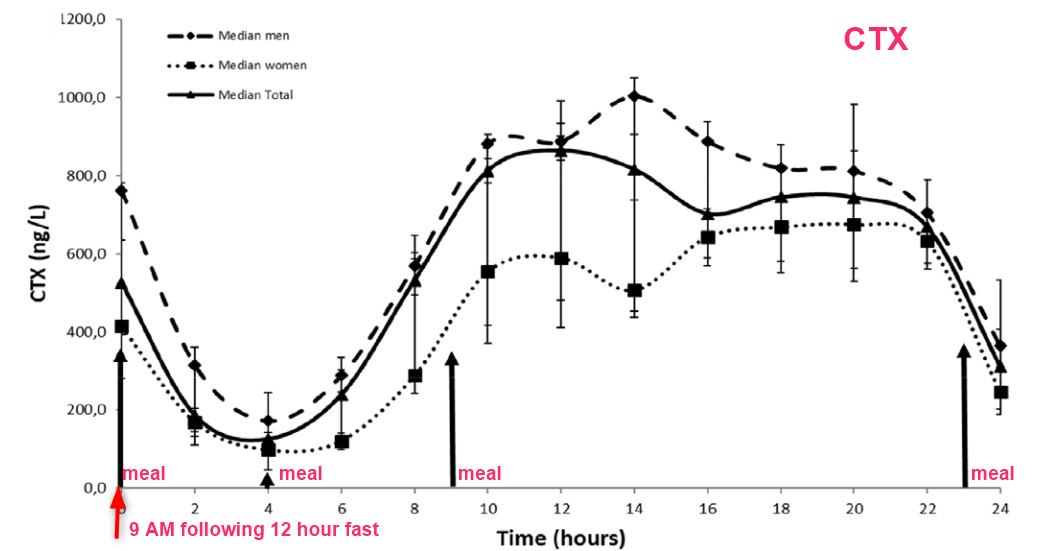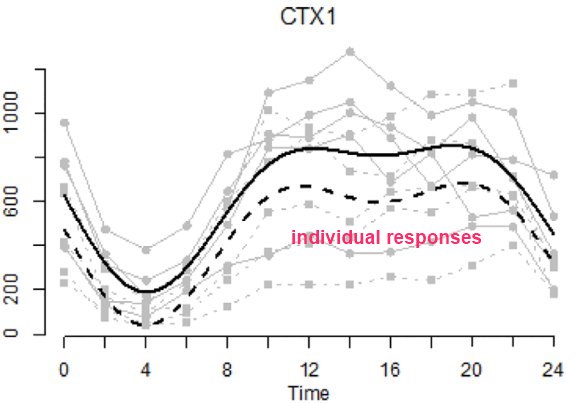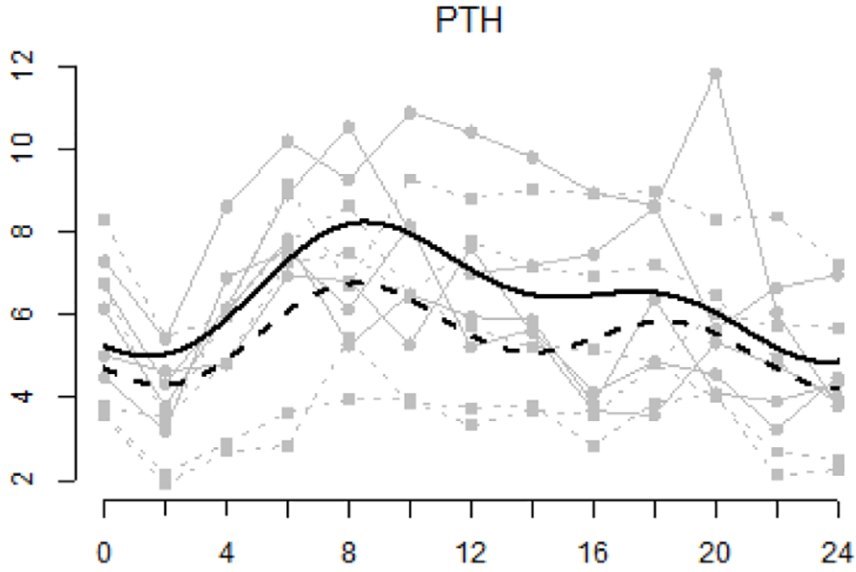Maasai have PTH and bone resorption (CTX) circadian rhythms
The circadian rhythm of calcium and bone homeostasis in Maasai
Am J Hum Biol. 2022 Apr 28;e23756. doi: 10.1002/ajhb.23756
Anne Schou 1 2, Niklas Rye Jørgensen 3 4, Venance Phillip Maro 5, Kajiru Kilonzo 5, Kaushik Ramaiya 6, Joseph Sironga 5 7, Andreas Kryger Jensen 2 4, Dirk Lund Christensen 2 4, Peter Schwarz 1 4
Objectives: Ethnic groups differ in prevalence of calcium-related diseases. Differences in the physiology and the endogenous circadian rhythm (CR) of calcium and bone homeostasis may play a role. Thus, we aimed to investigate details of CR pattern in calcium and bone homeostasis in East African Maasai.
Methods: Ten clinically healthy adult Maasai men and women from Tanzania were examined. Blood samples were collected every 2nd hour for 24 h. Serum levels of total calcium, albumin, parathyroid hormone (PTH), 25(OH)D, creatinine, C-terminal telopeptide (CTX), bone-specific alkaline phosphatase (BSAP), procollagen type 1 N-terminal propeptide (P1NP), and osteocalcin were measured. Circadian patterns were derived from graphic curves of medians, and rhythmicity was assessed with Fourier analysis.
Results: PTH-levels varied over the 24 h exhibiting a bimodal pattern. Nadir level corresponded to 65% of total 24-h mean. CTX and P1NP showed 24-h variations with a morning nadir and nocturnal peak with nadir levels corresponding to 23% and 79% of the 24-h mean, respectively. Albumin-corrected calcium level was held in a narrow range and alterations were corresponding to alterations in PTH. There was no distinct pattern in 24-h variations of 25(OH)D, creatinine, osteocalcin, or BSAP.
Conclusions: All participants showed pronounced 24-h variations in PTH and bone turnover markers CTX and P1NP. These findings support that Maasai participants included in this study have typical patterns of CR in calcium and bone homeostasis consistent with findings from other ethnic populations.




📄 Download the PDF from Vitamin D Life
From PDF
"The traditional Maasai diet to a large degree consists of milk and milk products with some studies suggesting that these account for ~20% of the daily energy intake"
"Eighteen individuals were initially enrolled in the study following 12 h of overnight fasting"
"All participants received food as close to their typical daily diet as possible."
They were indoors in a hotel during the experiment - not exposed to the sun
- Without access to the sun it seems reasonable that there was no circadian changes in Vitamin D levels
No indication if the experiment was conducted in the dry or wet season
Vitamin D Life pages with PTH in title (32 as of April 2022)
This list is automatically updated
{LIST()}
